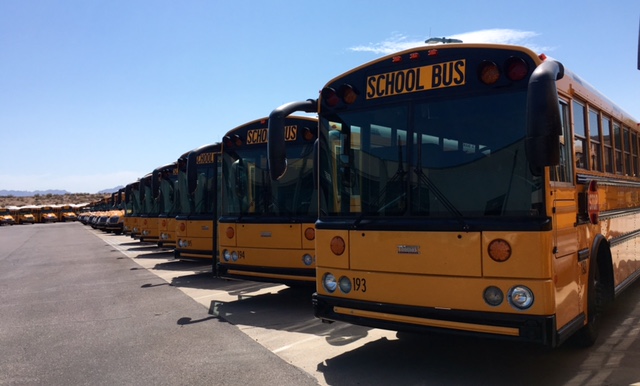

A for Arizona, a nonprofit organization dedicated to improving Arizona education, has been selected as program administrator for the Arizona Transportation Modernization Grants Program, which is designed to address the many problems with current school transportation.
This new $20 million initiative puts Arizona at the forefront of developing safer, more innovative and more reliable ways to get K-12 students to school.
“We are thrilled for this opportunity,” Emily Anne Gullickson, A for Arizona’s founder and CEO, told AZ Tech Beat. “We have permission to think outside the box.”
Innovative thinking is what this program is all about. A for Arizona is encouraging collaboration between historically disparate groups, ranging from tech startup leaders and business leaders to educators and government officials. The hope is that, with members from these groups working together, previously unavailable or seemingly impossible solutions for school transportation can be implemented.
No idea is too big or too small to be considered.
The Arizona State Legislature looks at school transportation (or the lack thereof) as a major barrier for families, especially those in underserved or low-income communities. The new grant program requires that 25% of the funds should support proposals that specifically address those groups.
“The Arizona Transportation Modernization Grants Program will strengthen opportunities for kids and families in rural communities and all areas of the state, and it will expand access to safe transportation for K-12 students,” Arizona Gov. Doug Ducey said in a statement.
The $20 million fund is made up of $10 million from state appropriations set aside by the Arizona State Legislature for FY2022, with a match of $10 million in federal stimulus money from Ducey’s office. Grants proposals can be submitted for up to $2 million and grants will be awarded through the A for Arizona Expansion & Innovation Fund.
“Think of it like seed funding,” Gullickson said. “How do we take the money and bring your idea to life?”
No more yellow buses?
The logistics of getting kids to and from school are complicated, and transportation is also a major burden on school budgets. Not only that, but the virtual learning that came as a result of the pandemic further highlighted many of the key issues and also significantly changed the education system as a whole.
Students use a number of ways to get to school, many of which are outdated, inefficient and even unsafe. The big yellow school bus is the safest mode of transportation for school kids, but those buses are expensive, outdated and in short supply. They also eat up a lot of gas. As a result, school districts have to be very selective on who can ride.
Students who don’t ride the bus have to walk long distances or use public transportation, which often makes several stops and significantly increases commute times. Then, there are those who can’t go to their preferred school altogether.
The matter of open enrollment
In 1980, Arizona was the first state to implement open enrollment, which allows parents and students to choose the school that best fits their needs.
While this is popular with parents and students looking to attend a specific kind of school, it also complicates school transportation even more. Gullickson mentioned that a 2016 study found that one out of every two students isn’t attending the school designated by school boundaries. She mentioned an Arizona school in which a majority of its students are from different zip codes.
“Arizonans believe in school choice, and the state’s transportation investments will result in even more education opportunities that best fit families’ unique needs,” said Ducey.
Open enrollment has been happening for more than 40 years. The mobility is happening no matter what, so Gullickson said it’s now about equity, providing everyone with the opportunity to choose where they learn.
The call for applicants flyer reads, “A choice is not a choice if you can’t get there.”
Lead and others will follow
Gullickson hopes that applicants will set out to solve a specific problem or group of problems with school transportation, no matter if it’s a problem in the system or within a small subset of students. She wants them to feel like they have the flexibility and runway they need to find and implement a solution.
Throughout the year, grant winners will gather data in order to build playbooks that others outside of Arizona can use, too.
Gullickson hopes there will be several more cycles in the future, but for now she’s excited to see what this first group will do.
“I’m so excited about how we as a community are really inviting everyone to the table to find solutions,” she said.
This first grant cycle opens next week on Tuesday, Aug. 24., and the deadline for submissions is Friday, Oct. 8. Proposals will be vetted by an outside vetting committee, a process that Gullickson should conclude by Oct. 31.
